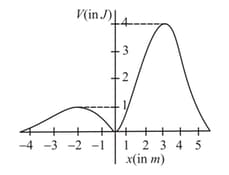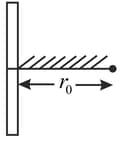HARD
Earn 100
A metal sphere of radius was insulated from its surroundings and given a large positive charge. A small charge was brought from a distance point to a point from the sphere's centre. The work done against the electric field was and the force on the small charge at its final position was . If the small charge has been moved to only from the centre of the sphere, what would have been the values for the work done and the force?
(a)
(b)
(c)
(d)
50% studentsanswered this correctly
Important Questions on Electrostatics
MEDIUM
EASY
EASY
HARD
EASY
MEDIUM
MEDIUM
EASY
MEDIUM
A charge Q is uniformly distributed over a long rod AB of length L as shown in the figure. The electric potential at the point O lying at a distance L from the end A is :

EASY
EASY
The diagrams below show regions of equipotential.

A positive charge is moved from to in each diagram.
HARD
HARD

HARD
A point particle of mass is moving along the -axis under a force described by the potential energy shown below. It is projected towards the right from the origin with a speed .

What is the minimum value of for which the particle will escape infinitely far away from the origin?
EASY
The electric field intensity at a distance from the origin varies as
MEDIUM

MEDIUM
MEDIUM
MEDIUM
The total potential at a point at distance from their common centre, where would be:
MEDIUM

